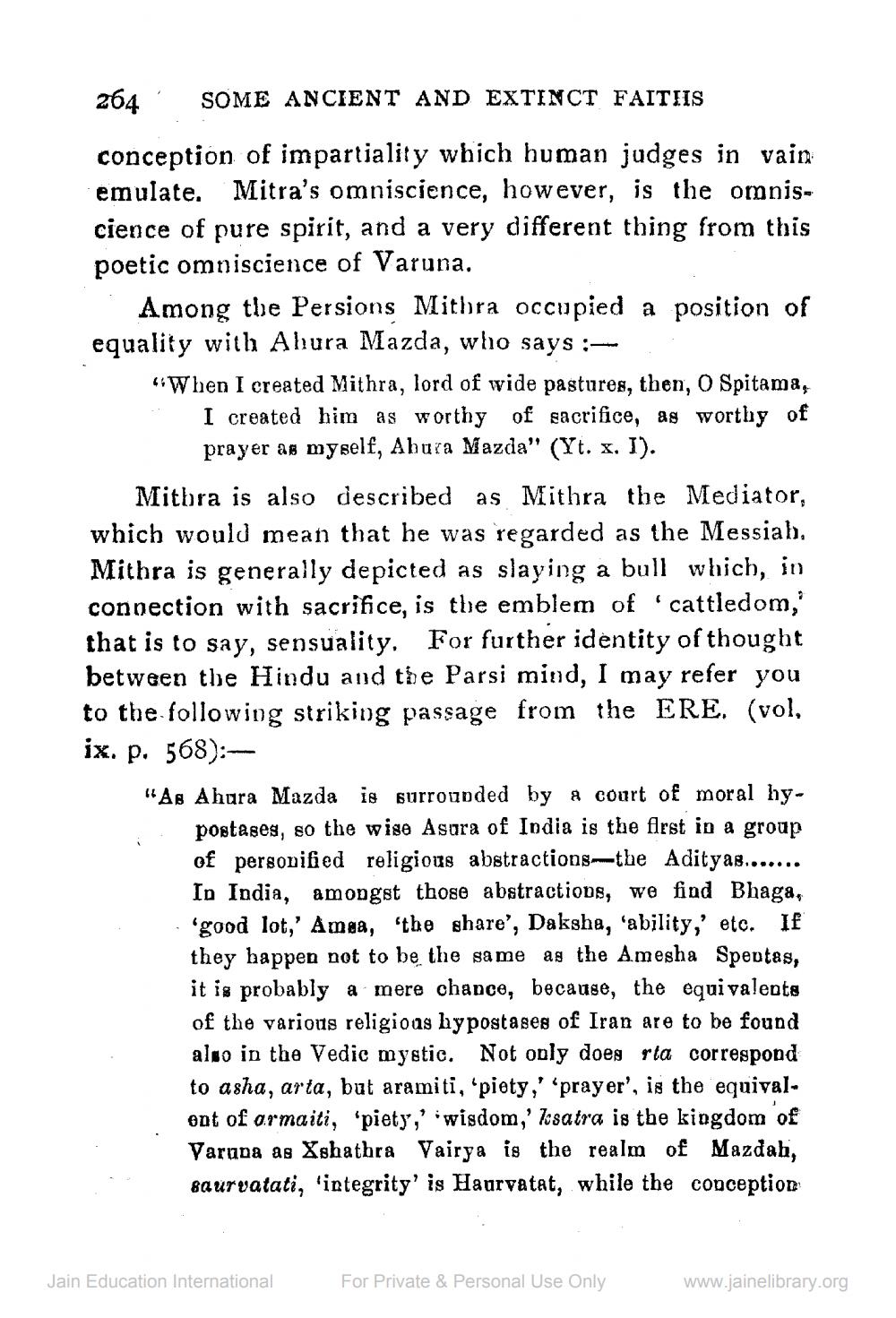________________
264
SOME ANCIENT AND EXTINCT FAITIIS
conception of impartiality which human judges in vain emulate. Mitra's omniscience, however, is the omniscience of pure spirit, and a very different thing from this poetic omniscience of Varuna.
Among the Persions Mitbra occupied a position of equality with Ahura Mazda, who says :“When I created Mithra, lord of wide pastures, then, 0 Spitama,
I created him as worthy of sacrifice, as worthy of
prayer as myself, Abura Mazda" (Yt. x. I). Mitbra is also described as Mithra the Mediator, which would mean that he was regarded as the Messiah, Mithra is generally depicted as slaying a bull which, in connection with sacrifice, is the emblem of cattledom, that is to say, sensuality. For further identity of thought between the Hindu and the Parsi mind, I may refer you to the following striking passage from the ERE. (vol, ix. p. 568):"As Ahura Mazda is surrounded by a court of moral hy
postases, so the wise Asara of India is the first in a group of personified religious abstractions--the Adityas....... In India, amongst those abstractions, we find Bhaga, 'good lot,' Ampa, 'the share', Daksha, 'ability, etc. If they happen not to be the same as the Amesha Spentas, it is probably a mere chance, because, the equivalents of the various religious hypostages of Iran are to be found also in the Vedic mystic. Not only does rta correspond to asha, arta, but aramiti, 'piety,' 'prayer', is the equival. ont of ormaiti, 'piety,' wisdom,' Ksatra is the kingdom of Varana as Xshathra Vairya is the realm of Mazdah, saurvatati, 'integrity' is Haurvatat, while the conception
Jain Education International
For Private & Personal Use Only
www.jainelibrary.org




